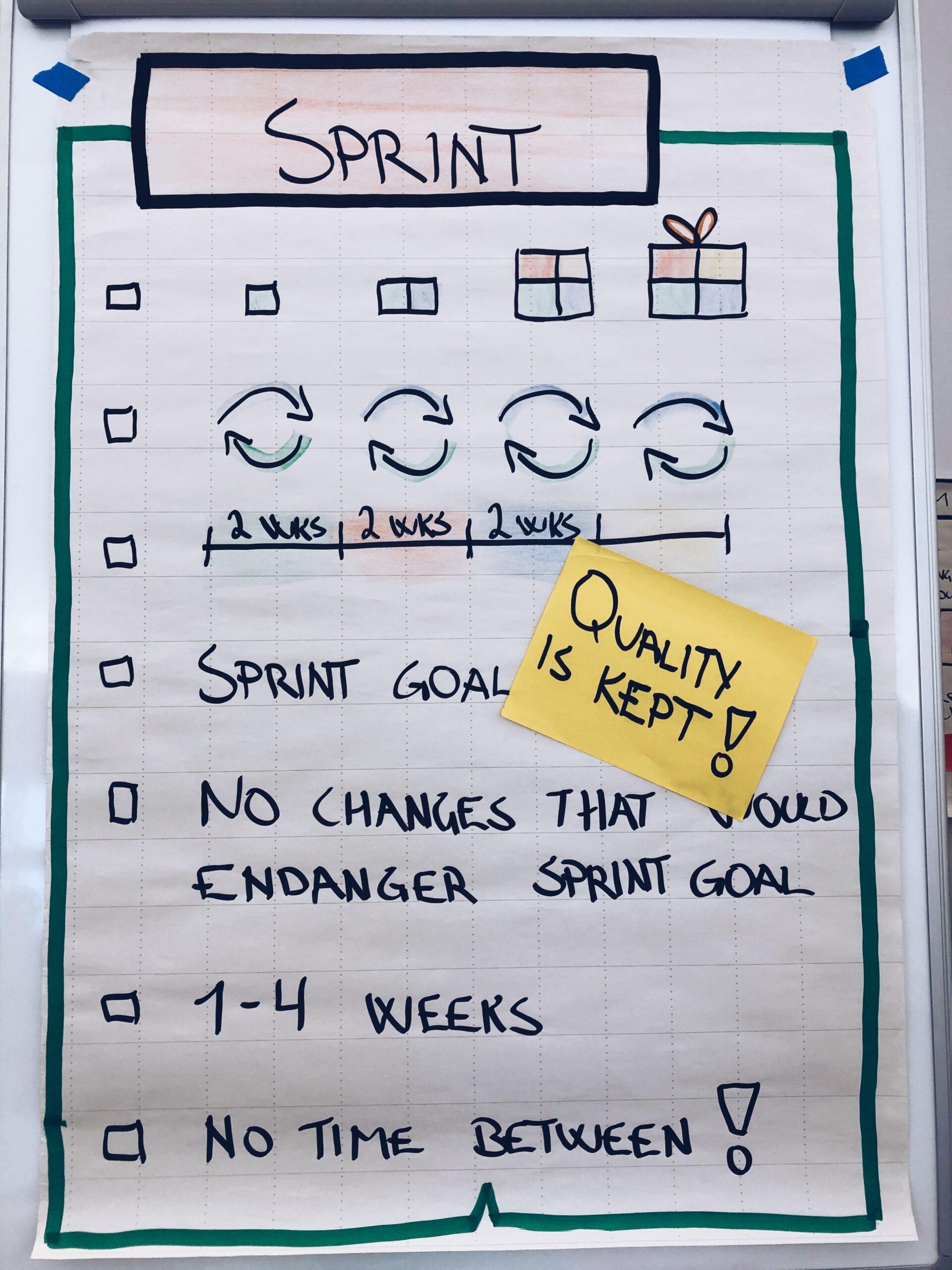
Engineering leadership | Blog Post
How To Run An Effective Daily Scrum Meeting
Wes Mitchell-Lewis
Share this post
What is a Daily Scrum Meeting?
It is a short, it’s a daily status meeting, AK a daily standup meeting. Standups were originally named that because everyone would literally “stand up” next to their desks for the meeting. But how do you run an effective daily scrum meeting and why do you need it?
Unfortunately, and oh so commonly, only about 8% of leaders are good at aligning strategy with execution. This ends up creating an often-messy situation around priorities and what exactly everyone is – or should be – working on.
In order to get teams on the same page, various models have come into play, including the “standup meeting”, the “scrum meeting”, or “daily scrum meeting”. No matter the name, these meetings are intended to help teammates to develop a shared understanding, coordinate efforts, and collaborate on problems.
Why is a Daily Scrum Meeting Important?
Standing up next to your desk and reviewing daily sprint to-dos is not always possible when more and more teams are remote. But, a standup is a very transactional meeting, so it doesn’t need to happen in person.
Instead, you can apply an approach that uses async communication. Each person can quickly create a check-in that covers what they’re doing, what they’ve done, and share it with the team. You can go beyond the status update and have the whole team also answer a fun question, which helps foster team culture and connections among these remote workers.
There are generally three cornerstone questions that make up a scrum meeting agenda and these questions should be covered by all team members in their check-in:
- What did you do yesterday?
- What will you do today?
- What blockers stand in your way?
For the times when you would prefer to hold a synchronous sprint planning meeting or daily scrum, keep these best practices in mind to engage remote employees:
Effective Daily Scrum Meeting Best Practices
- Intentionally Engage The Team: Make sure everyone has a chance not just to report on the work, but to also report on themselves. It makes for a more inclusive and engaging experience.
- Share Information: Remote meetings can get derailed quickly by a lack of focus and engagement, or be taken over by the people who talk the most. Create shared agendas, assign action items on the spot, and share the meeting notes with everyone via email or Slack to ensure follow-through.
- Easy Access: Of course there should be a calendar invite for the standup and it should always have the conferencing link in it. But you should also set a 5 or 10min alert notification so that everyone is ontime for the meeting. Also build in a couple of buffer minutes at the start in case of any technical issues.
- The Right Tools: Make sure everyone can see and hear each other. One of the most frustrating things for people in daily standups is when a remote employee needs to talk to someone (usually about blockers) and can’t locate them in the room. “Is Jessica there? Jessica?” This can decrease the meeting’s efficiency. Consider a budget to support the right tech for the team, from high-quality cameras to good lights and headsets.
- Effective Time Management: When you are working on a project for a long time, it is easy to develop some tunnel vision. When you are recapping it, you get into every minute detail because you know it by heart. An effective daily scrum can keep people on track throughout the meeting and come up with an effective, simple and respectful way to notify a person when they are rambling.
- Mix It Up: To keep people engaged and ontime, mix up the order of who is presenting, what projects get talked about first and last. It keeps everyone on their toes a little bit but that’s ok for a quick meeting like this.
- Preparation Is Key: Everyone should log their updates in a shared doc before the meeting in the same format. This ensures people know what they need to cover and also gives a look back at what people completed each day.
- Ask For Feedback: It’s important to ask for remote employee feedback on everything so that they feel appreciated and engaged. Ask them what is good and not so good. Start with the agenda itself: Is it effective? Are we staying within time? Are people saying valuable things about how work is progressing?
When you host a remote meeting like a daily scrum standup, it will never be exactly the same as running it in person, and it’s not supposed to be. These daily standups will continue to hold importance to every team even in a remote-first world. Alignment on projects and sprints among team members is paramount to ultimately providing the best customer experience possible, no matter the product or service.
We hope you were able to learn today! Keep exploring the rest of Terminal’s content offerings and if you are interested in learning more about how we can help you accomplish your growth goals, please


